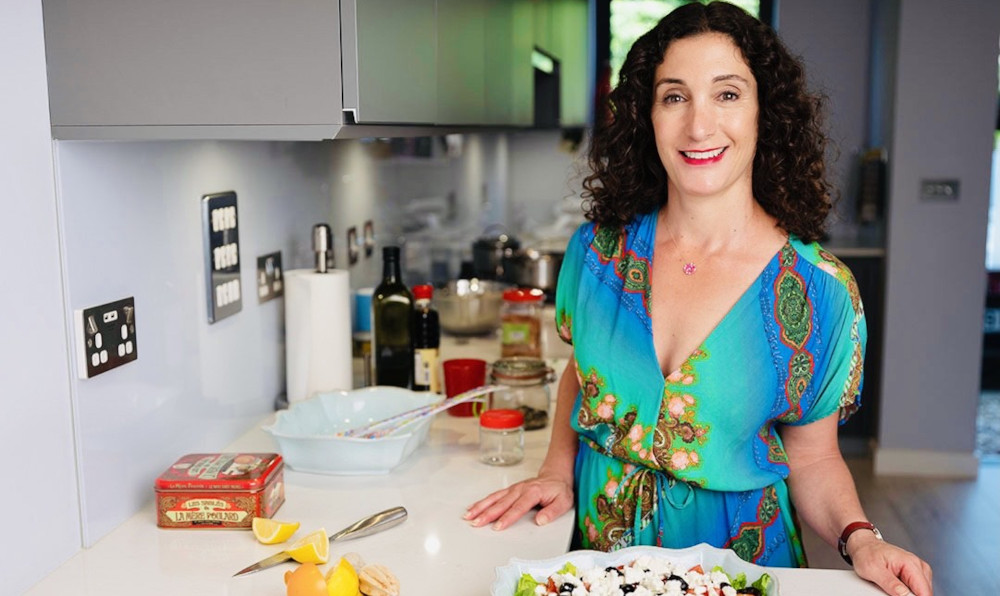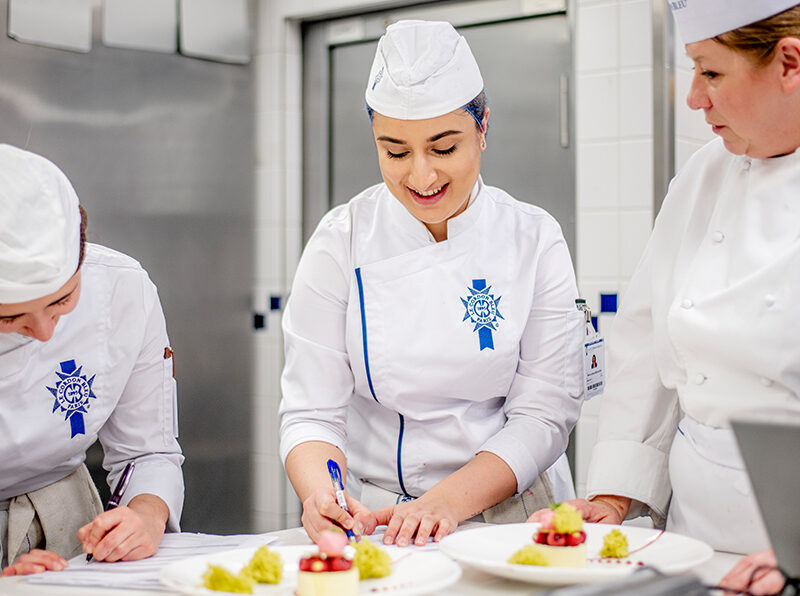
LEBANESE FOOD HACKS
Lebanese Food Hacks
Angela Zaher on how her upbringing in Beirut has translated to the dinner table in south west London
Healthy eating has been forefront on my agenda ever since I had my children 12 and 14 years ago. However, over the past couple of years, implementing this in my family has been both more challenging and more essential than ever given the onslaught of the pandemic and all its physical and psychological side effects. An after-dinner tray piled high with chocolate and biscuits to munch on whilst watching TV in the early days of the pandemic to relieve us momentarily from all the stress quickly became a feature of our eating habits. This overindulgence would have been fine if it had lasted for two weeks but a month into the first lockdown, we had to change our ways if we were ever to leave that sofa.
I was born in Beirut, Lebanon and spent most of my childhood there. I came to the UK for university and have stayed here since. Home for me has been south west London for over 25 years. In our little corner of London where I have raised my children, I have found community and friendship. I love having the river nearby. I love all the green spaces afforded by the parks and commons. I love feeling like I am in the South of France when I have lunch alfresco on a sunny day on the ‘Kingston Riviera’ with my friends.
Growing up in Lebanon, we never dwelled too much on healthy eating, the 5-a-day quota would have been reached way before lunch so we never counted. For example, a typical Lebanese breakfast would include loaves of thin pitta bread (khoubz) in which we would scoop up labneh, a strained Greek yoghurt dip and have this with fresh mint leaves, mini cucumbers, tomatoes and olives. There would also be a bowl of fruit at the breakfast table and my father would take a few, peel and slice them all up and pass them round.
In the UK with my own family, I have found ways to bring simple healthy food hacks into our lives so that we too never have to worry about counting up to 5 a day. My guiding principles in food are colour, texture and flavour. In everything I prepare, I think about how I am fulfilling these three criteria. I am also a huge fan of eating as many fruits and vegetables raw in order to get the maximum health benefit out of them. The first thing I do when I go to my kitchen in the morning is prepare a plate of fruit for the family to munch on before their cereal. The contents of the plate varies depending on what’s in season but I focus on having a good mix of crunchy fruit such as apples, vibrant red berries to attract the eye and maybe some melon or kiwi for the sweetness and contrast of colours and textures. I do try and arrange these in some sort of pattern like they do in top hotels to make it as appealing as possible! Eating the colours of the rainbow in fruit and veg is what a healthy diet looks like to me.
At dinner time, before I start cooking, I always chop up a selection of veg and likewise either arrange them on a plate like the fruit or put in different bowls spread out over the table. Slices of fresh pepper are a great way to add colour but in our house, there are two favourites that are always there. Slices of mini cucumbers (they taste so much better than their larger cousins) and carrot batons generously doused with lemon juice and a dash of sea salt. The idea of putting lemon and salt onto fresh carrots comes straight from the bars and restaurants in Lebanon. Whenever you sit down at a table ready to order an ice cold beer in Beirut, the waiters bring you a bowl of carrot sticks prepared in this way and a bowl of nuts. What a way to hook customers and make sure they stay for the long haul.
At home in London, as soon as these bowls of cucumbers and carrots hit the table, passers by start nibbling away at them. They are usually empty by the time we sit down to eat.
As well as healthy eating, I am also passionate about food waste. When planning what to prepare, I look at my fridge first and think what needs to be used up and how best to combine those ingredients. On Mondays, I tend to make a couscous salad to use up any leftover meat from Sunday’s roast, along with fresh herbs, pine nuts and pomegranate seeds, but it can be easily adapted to whatever you have in your pantry or freezer. If you want to customise it, run a quick check: is there a variety of colours? Contrasting textures? Do these flavours like to mingle? Three yes’s and you are onto a winner
COUSCOUS SALAD
SERVES 4
200g Couscous
350ml boiling water
1 chicken or vegetable stock cube
Juice and zest of 1 lemon
100g cooked leftover meat or a tin of mackerels in pieces
1 handful of blanched or roasted broccoli/ cauliflower
1 yellow pepper, diced
2 large tomatoes diced
1 handful of coriander, roughly chopped
2 handfuls of pine nuts, toasted
1 handful of pomegranate seeds
- Put the couscous in a large heatproof bowl. Scatter the stock cube over it, add the lemon juice and zest. Pour over the boiling water and cover with a plate. Leave for ten minutes or until all the water has absorbed.
- Fluff up the couscous with a fork then add in all the other ingredients. Mix well and let the flavours happily mingle for at least 30 minutes before serving.
- Garnish with the toasted pine nuts and pomegranate seeds.






